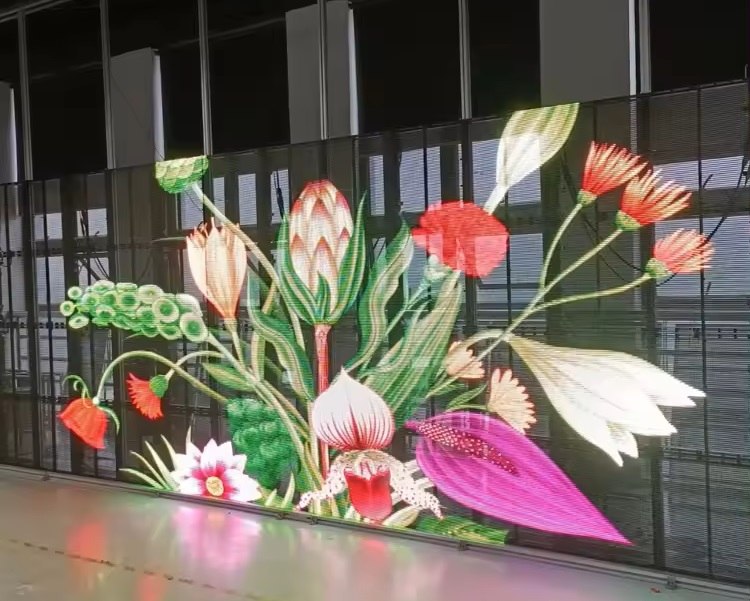Transparent LED display screens are receiving increasing attention from various industries due to their transparent display functions and unique application areas. As a popular commercial display device, they can present cool and colorful image effects, making product images bright and bright. The dazzling colors bring users an excellent visual experience. Therefore, more and more people recognize the importance of transparent screens in the market. Of course, the advantages of transparent screens are definitely not limited to that. Let’s now have a more comprehensive understanding of the advantages and disadvantages of LED transparent screens.

The advantages of transparent LED display screens
1. High transmittance
The transparency of transparent LED display screens can reach 65% -85%, because each LED strip has a thickness of only 2 millimeters, forming a transparent gap between their strips. They are usually installed on the inside of commercial building glass curtain walls, and installed indoors on outdoor display devices, which can break the limitations of traditional LED display screens on glass.
The advantages and disadvantages of transparent LED display screens can be identified after reading them
2. Borderless Free Square
As a display carrier, transparent LED screens, if bound by borders, abandon their characteristics of being large, small, and freely flexible, completely violating the development direction of transparent LED screens. They tie a “stumbling block” to the application of LED large displays, setting up their own cage, and hindering popularization. Borderless LED transparent screens have the characteristics of ultra-light and high transparency. Optimized the border and overall appearance, resulting in a lighter weight and a more concise appearance. The weight of a single box is only 2.75kg, which is more than 40% lighter than similar sized products in the same industry. Breaking through the high transmittance of over 70%.
3. Small footprint and light weight
The thickness of the screen main board is only 10mm, After the installation of the LED transparent wall, it hardly occupies any space and does not interfere with other facilities or structures near the glass curtain wall. The LED transparent screen is extremely lightweight, and after installation on the glass curtain wall, the load requirements for the glass curtain wall change very little.
4. Unrestricted by size, with strong creativity
Because creative LED display screens cover many aspects, they can be cut according to the required installation size and shape, which can solve the problem of transparent LED display screen body obstruction affecting the exterior walls of buildings. They can be made into various LED abnormal shapes, and can also be made into LED three-dimensional displays. Creative LED displays provide better visual appeal in appearance, actively attract traffic, and play an increasingly prominent role in advertising. The creative design can be customized according to the building, which not only does not affect the wall, but also adds a touch of unusual technological beauty.
5. Powerful protection and maintenance capabilities
The original intention of the transparent display screen design was to consider the self-protection and maintenance level of the screen body. A small border splicing combination scheme was adopted to greatly ensure the safety and stability of the transparent screen during transportation or use. Front and rear dual maintenance further reduces the maintenance cost for users using LED transparent screens.
6. Green and energy-saving, with good heat dissipation performance
Transparent LED display screens, due to their excellent performance such as high transparency, no noise, and low power consumption, do not require any auxiliary cooling equipment and can allow wind to naturally dissipate heat. When playing video advertisements, the part of the content being played is displayed as glowing, while the rest is not. It saves more than 30% of energy compared to conventional LED displays. This playback method can also reduce energy consumption, reduce light pollution, and respond to the national call for energy conservation and emission reduction.
